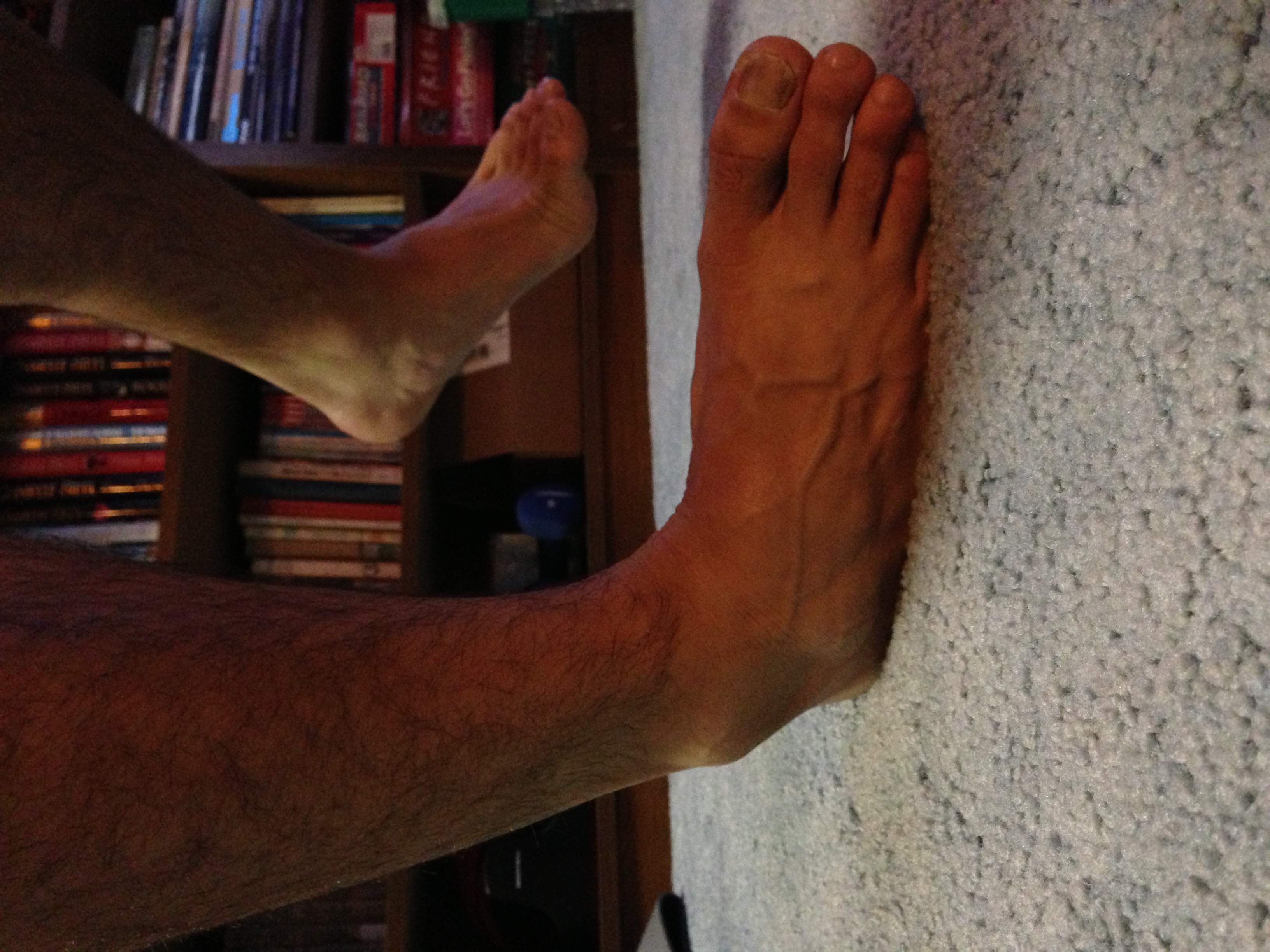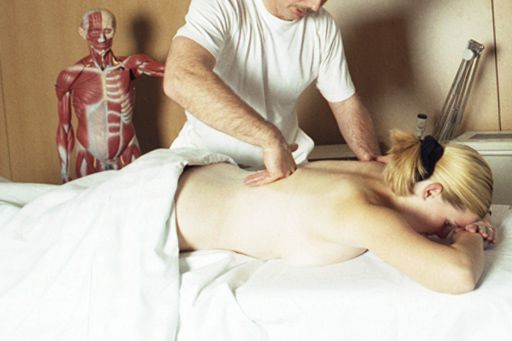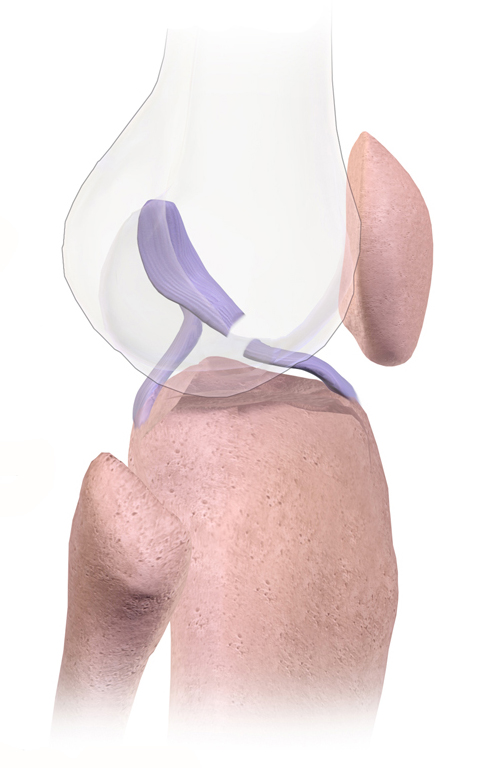|
Sprain
A sprain is a soft tissue injury of the ligaments within a joint, often caused by a sudden movement abruptly forcing the joint to exceed its functional range of motion. Ligaments are tough, inelastic fibers made of collagen that connect two or more bones to form a joint and are important for joint stability and proprioception, which is the body's sense of limb position and movement. Sprains may be mild (first degree), moderate (second degree), or severe (third degree), with the latter two classes involving some degree of tearing of the ligament. Sprains can occur at any joint but most commonly occur in the ankle, knee, or wrist. An equivalent injury to a muscle or tendon is known as a strain. The majority of sprains are mild, causing minor swelling and bruising that can be resolved with conservative treatment, typically summarized as RICE: rest, ice, compression, elevation. However, severe sprains involve complete tears, ruptures, or avulsion fractures, often leading to j ... [...More Info...] [...Related Items...] OR: [Wikipedia] [Google] [Baidu] [Amazon] |
Sprained Ankle
A sprained ankle (twisted ankle, rolled ankle, turned ankle, etc.) is an injury where sprain occurs on one or more ligaments of the ankle. It is the most commonly occurring injury in sports, mainly in ball sports (basketball, volleyball, and football) as well as racquet sports (tennis, badminton and pickleball). Signs and symptoms Knowing the symptoms that can be experienced with a sprain is important in determining that the injury is not really a break in the bone. When a sprain occurs, hematoma occurs within the tissue that surrounds the joint, causing a bruise. White blood cells responsible for inflammation migrate to the area, and blood flow increases as well. Along with this inflammation, swelling and pain is experienced. The nerves in the area become more sensitive when the injury is suffered, so pain is felt as throbbing and will worsen if there is pressure placed on the area. Warmth and redness are also seen as blood flow is increased. There is also decreased ability t ... [...More Info...] [...Related Items...] OR: [Wikipedia] [Google] [Baidu] [Amazon] |
Soft Tissue Injury
A soft tissue injury is the damage of muscles, ligaments and tendons throughout the body. Common soft tissue injuries usually occur from a sprain, strain (injury), strain, a one-off blow resulting in a contusion or overuse of a particular part of the body. Soft tissue injuries can result in pain, swelling (medical), swelling, bruising and loss of function. Signs and symptoms Sprains A sprain is a type of acute injury which results from the stretching or tearing of a ligament. Depending on the severity of the sprain, the movement on the joint can be compromised since ligaments aid in the stability and support of joints. Sprains are commonly seen in vulnerable areas such as the wrists, knees and ankles. They can occur from movements such as falling on an outstretched hand or a twisting of the ankle or foot. The severity of a sprain can be classified: * Grade 1: Only some of the fibers in the ligament are torn, and the injured site is moderately painful and swollen. Function in ... [...More Info...] [...Related Items...] OR: [Wikipedia] [Google] [Baidu] [Amazon] |
Strain (injury)
A strain is an acute or chronic soft tissue injury that occurs to a muscle, tendon, or both. The equivalent injury to a ligament is a sprain. Generally, the muscle or tendon overstretches and partially tears, under more physical stress than it can withstand, often from a sudden increase in duration, intensity, or frequency of an activity. Strains most commonly occur in the foot, leg, or back. Immediate treatment typically used to include four steps abbreviated as R.I.C.E. (rest, ice, compression, elevation) before the role of inflammation was found to be helpful. Signs and symptoms Typical signs and symptoms of a strain include pain, functional loss of the involved structure, muscle weakness, contusion, and localized inflammation. A strain can range from mild overstretching to severe tears, depending on the extent of injury. Cause A strain can occur as a result of improper body mechanics with any activity (e.g., contact sports, lifting heavy objects) that can induce m ... [...More Info...] [...Related Items...] OR: [Wikipedia] [Google] [Baidu] [Amazon] |
RICE (medicine)
RICE is a mnemonic acronym for the four elements of a treatment regimen that was once recommended for soft tissue injuries: rest, ice, compression, and elevation. It was considered a first-aid treatment rather than a cure and aimed to control inflammation. It was thought that the reduction in pain and swelling that occurred as a result of decreased inflammation helped with healing. The protocol was often used to treat sprains, strains, cuts, bruises, and other similar injuries. Ice has been used for injuries since at least the 1960s, in a case where a 12-year-old boy needed to have a limb reattached. The limb was preserved before surgery by using ice. As news of the successful operation spread, the use of ice to treat acute injuries became common. The mnemonic was introduced by Dr. Gabe Mirkin in 1978. He withdrew his support of this regimen in 2014 after learning of the role of inflammation in the healing process. The implementation of RICE for soft tissue injuries as des ... [...More Info...] [...Related Items...] OR: [Wikipedia] [Google] [Baidu] [Amazon] |
Physical Therapy
Physical therapy (PT), also known as physiotherapy, is a healthcare profession, as well as the care provided by physical therapists who promote, maintain, or restore health through patient education, physical intervention, disease prevention, and health promotion. Physical therapist is the term used for such professionals in the United States, and physiotherapist is the term used in many other countries. The career has many specialties including musculoskeletal, orthopedics, cardiopulmonary, neurology, endocrinology, sports medicine, geriatrics, pediatrics, women's health, wound care and electromyography. PTs practice in many settings, both public and private. In addition to clinical practice, other aspects of physical therapy practice include research, education, consultation, and health administration. Physical therapy is provided as a primary care treatment or alongside, or in conjunction with, other medical services. In some jurisdictions, such as the United Kin ... [...More Info...] [...Related Items...] OR: [Wikipedia] [Google] [Baidu] [Amazon] |
Bruise
A bruise, also known as a contusion, is a type of hematoma of tissue, the most common cause being capillaries damaged by trauma, causing localized bleeding that extravasates into the surrounding interstitial tissues. Most bruises occur close enough to the epidermis such that the bleeding causes a visible discoloration. The bruise then remains visible until the blood is either absorbed by tissues or cleared by immune system action. Bruises which do not blanch under pressure can involve capillaries at the level of skin, subcutaneous tissue, muscle, or bone. Bruises are not to be confused with other similar-looking lesions. Such lesions include petechia (less than , resulting from numerous and diverse etiologies such as adverse reactions from medications such as warfarin, straining, asphyxiation, platelet disorders and diseases such as '' cytomegalovirus''); and purpura (), classified as palpable purpura or non-palpable purpura and indicating various pathologic condition ... [...More Info...] [...Related Items...] OR: [Wikipedia] [Google] [Baidu] [Amazon] |
Sports Medicine
Sports medicine is a branch of medicine that deals with physical fitness and the treatment and prevention of injuries related to sports and exercise. Although most sports teams have employed team physicians for many years, it is only since the late 20th century that sports medicine emerged as a distinct field of health care. In many countries, now over 50, sports medicine (or sport and exercise medicine) is a recognized medical specialty (with similar training and standards to other medical specialties or sub-specialties). In the majority of countries where sports medicine is recognized and practiced, it is a physician (non-surgical) specialty, but in some (such as the USA), it can equally be a surgical or non-surgical medical specialty, and also a specialty field within primary care. In other contexts, the field of sports medicine encompasses the scope of both medical specialists as well as Allied health professions, allied health practitioners who work in the field of sport, su ... [...More Info...] [...Related Items...] OR: [Wikipedia] [Google] [Baidu] [Amazon] |
Hematoma
A hematoma, also spelled haematoma, or blood suffusion is a localized bleeding outside of blood vessels, due to either disease or trauma including injury or surgery and may involve blood continuing to seep from broken capillaries. A hematoma is benign and is initially in liquid form spread among the tissues including in sacs between tissues where it may coagulate and solidify before blood is reabsorbed into blood vessels. An ecchymosis is a hematoma of the skin larger than 10 mm. They may occur among and or within many areas such as skin and other organs, connective tissues, bone, joints and muscle. A collection of blood (or even a hemorrhage) may be aggravated by anticoagulant medication (blood thinner). Blood seepage and collection of blood may occur if heparin is given via an intramuscular route; to avoid this, heparin must be given intravenously or subcutaneously. Signs and symptoms Some hematomas are visible under the surface of the skin (commonly called bruise ... [...More Info...] [...Related Items...] OR: [Wikipedia] [Google] [Baidu] [Amazon] |
Pain
Pain is a distressing feeling often caused by intense or damaging Stimulus (physiology), stimuli. The International Association for the Study of Pain defines pain as "an unpleasant sense, sensory and emotional experience associated with, or resembling that associated with, actual or potential tissue damage." Pain motivates organisms to withdraw from damaging situations, to protect a damaged body part while it heals, and to avoid similar experiences in the future. Congenital insensitivity to pain may result in reduced life expectancy. Most pain resolves once the noxious stimulus is removed and the body has healed, but it may persist despite removal of the stimulus and apparent healing of the body. Sometimes pain arises in the absence of any detectable stimulus, damage or disease. Pain is the most common reason for physician consultation in most developed countries. It is a major symptom in many medical conditions, and can interfere with a person's quality of life and general fun ... [...More Info...] [...Related Items...] OR: [Wikipedia] [Google] [Baidu] [Amazon] |
Cramp
A cramp is a sudden, involuntary, painful skeletal muscle contraction or overshortening associated with electrical activity. While generally temporary and non-damaging, they can cause significant pain and a paralysis-like immobility of the affected muscle. A cramp usually goes away on its own over several seconds or (sometimes) minutes. Cramps are common and tend to occur at rest, usually at night (nocturnal leg cramps). They are also often associated with pregnancy, physical exercise or overexertion, and age (common in older adults); in such cases, cramps are called idiopathic because there is no underlying pathology. In addition to those benign conditions cramps are also associated with many pathological conditions. Cramp definition is narrower than the definition of muscle spasm: spasms include any involuntary abnormal muscle contractions, while cramps are sustained and painful. True cramps can be distinguished from other cramp-like conditions. Cramps are different from mus ... [...More Info...] [...Related Items...] OR: [Wikipedia] [Google] [Baidu] [Amazon] |
Spasm
A spasm is a sudden involuntary contraction of a muscle, a group of muscles, or a hollow organ, such as the bladder. A spasmodic muscle contraction may be caused by many medical conditions, including dystonia. Most commonly, it is a muscle cramp which is accompanied by a sudden burst of pain. A muscle cramp is usually harmless and ceases after a few minutes. It is typically caused by ion imbalance or muscle fatigue. There are other causes of involuntary muscle contractions, and some of these may cause a health problem. A series of spasms, or permanent spasms, is referred to as a "spasmism". Description and causes Spasms occur when the part of the brain that controls movement malfunctions, causing involuntary muscle activity. A spasm may be a muscle contraction caused by abnormal nerve stimulation or by abnormal activity of the muscle itself. Causes The cause of spasms is often unknown, but it can be due to an inherited genetic problem, a side effect of medicatio ... [...More Info...] [...Related Items...] OR: [Wikipedia] [Google] [Baidu] [Amazon] |






